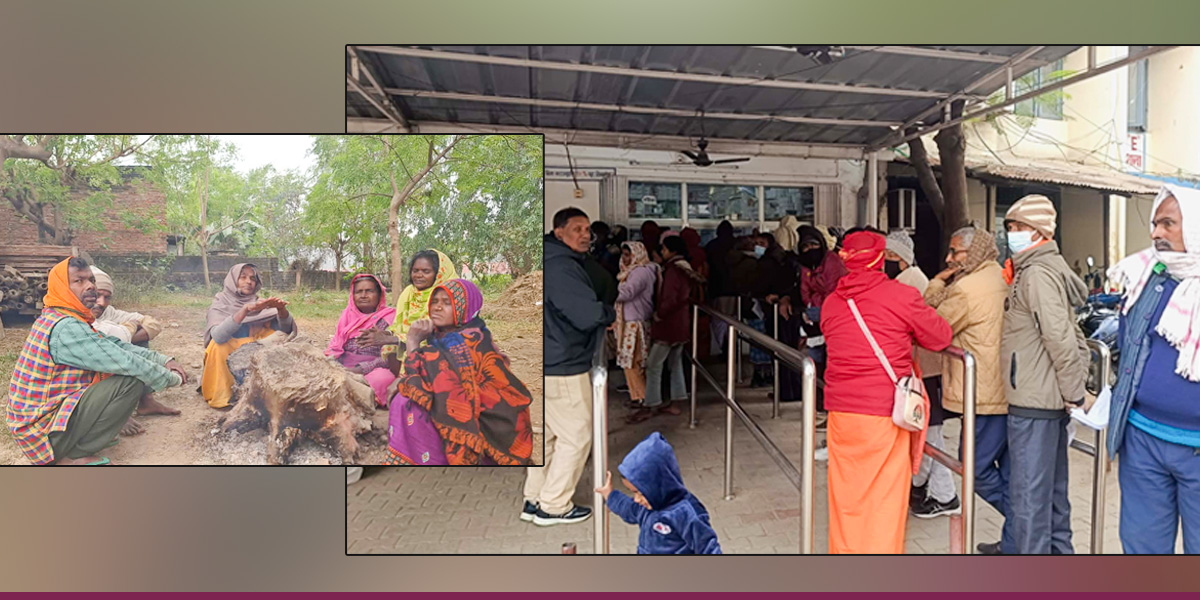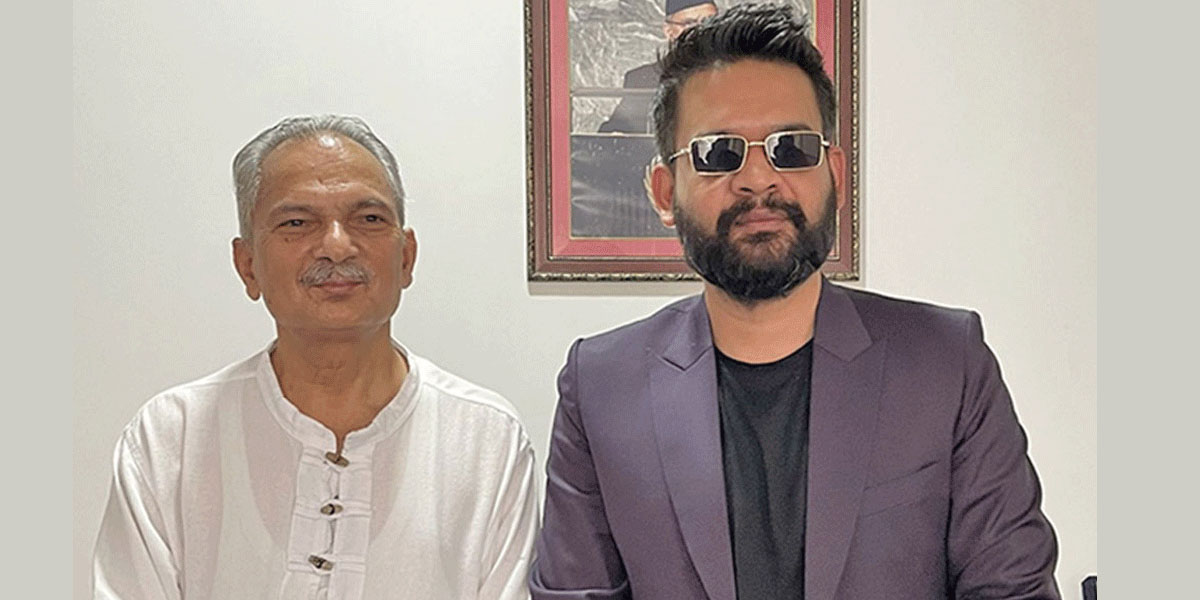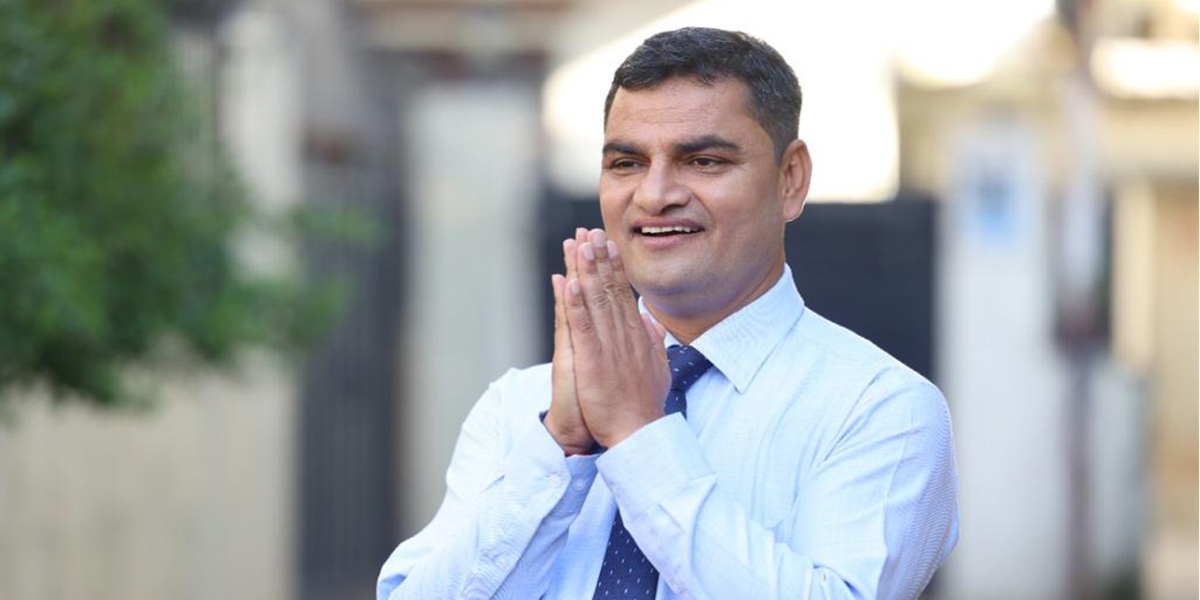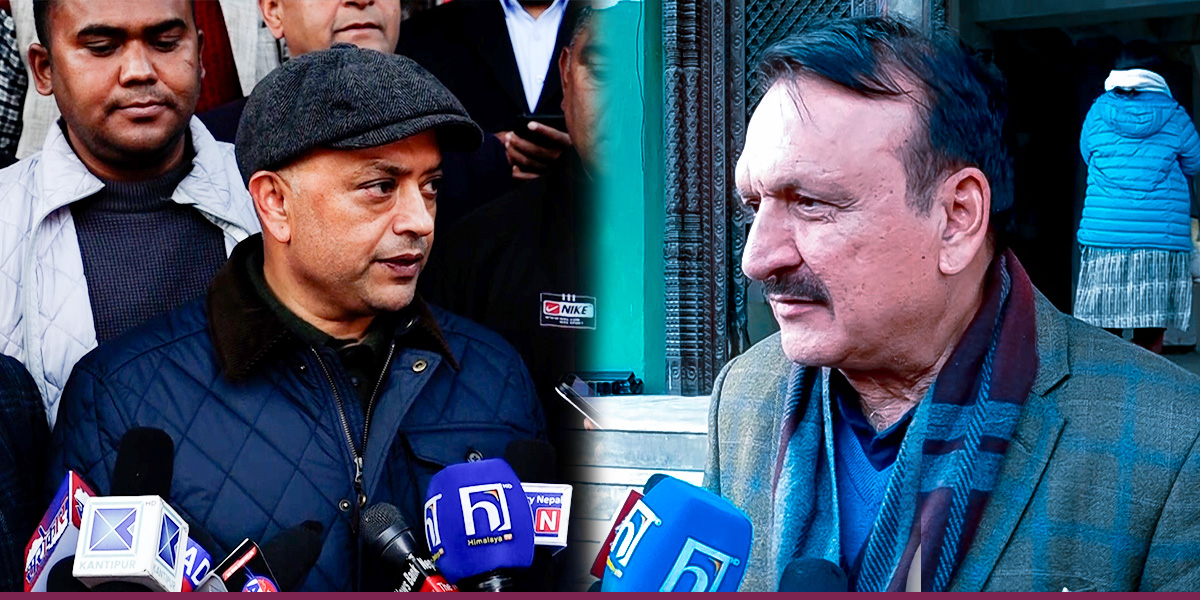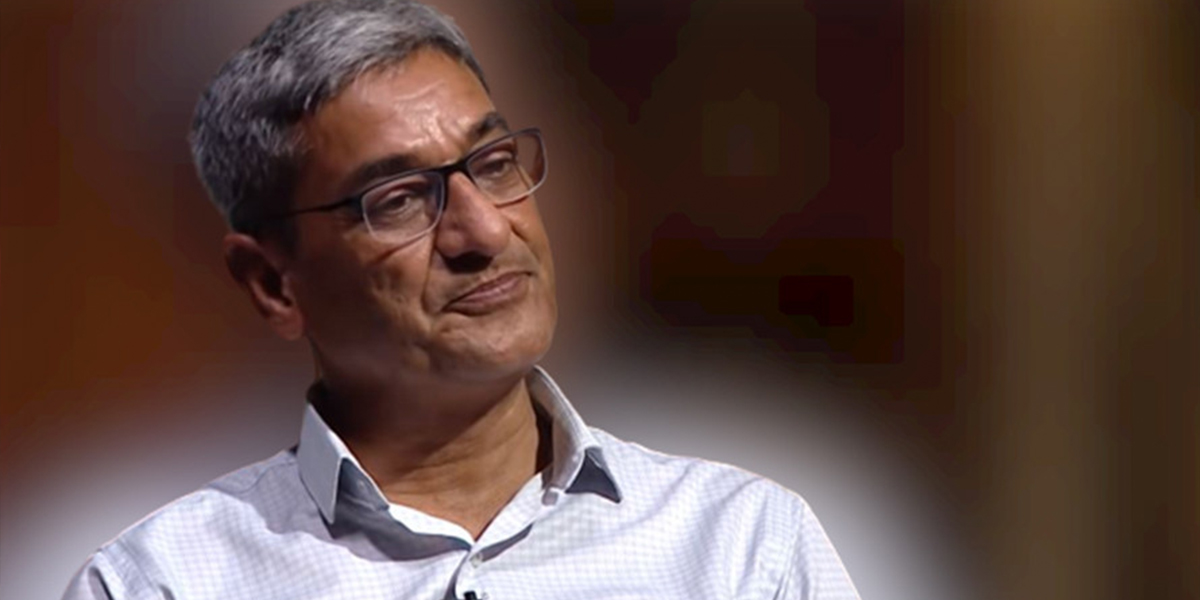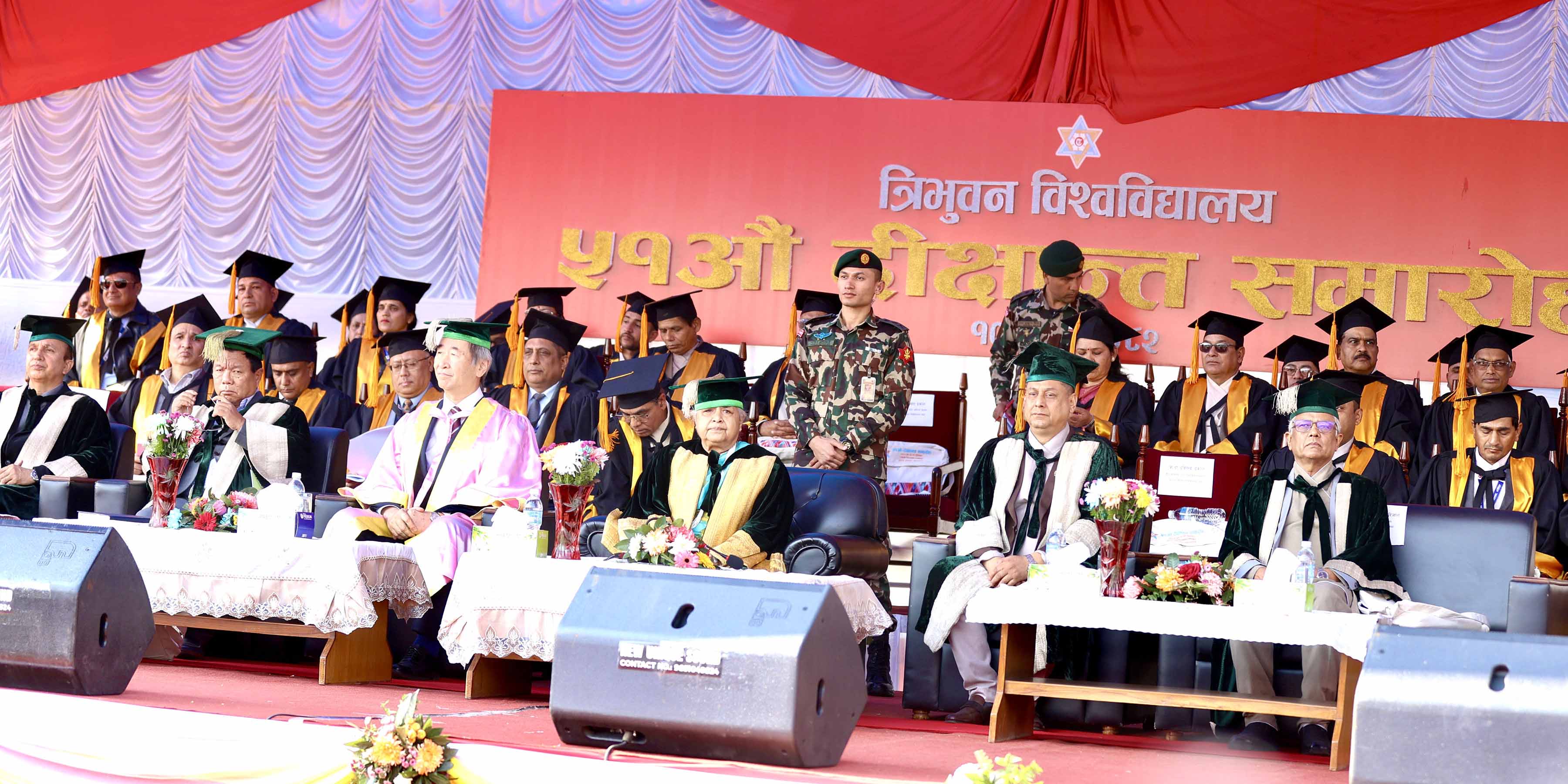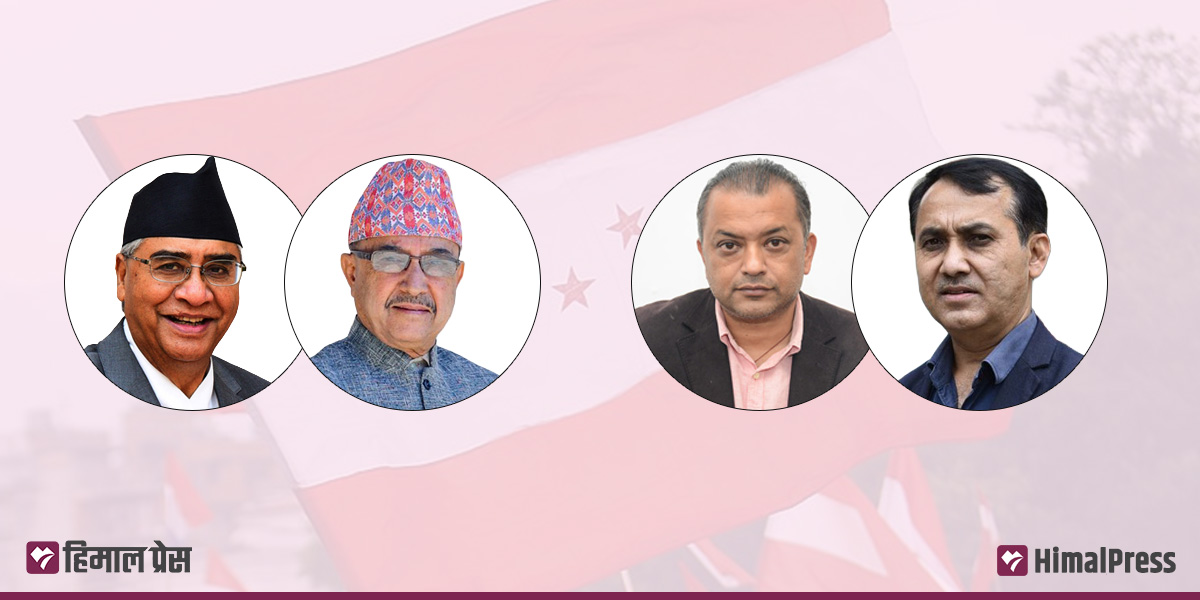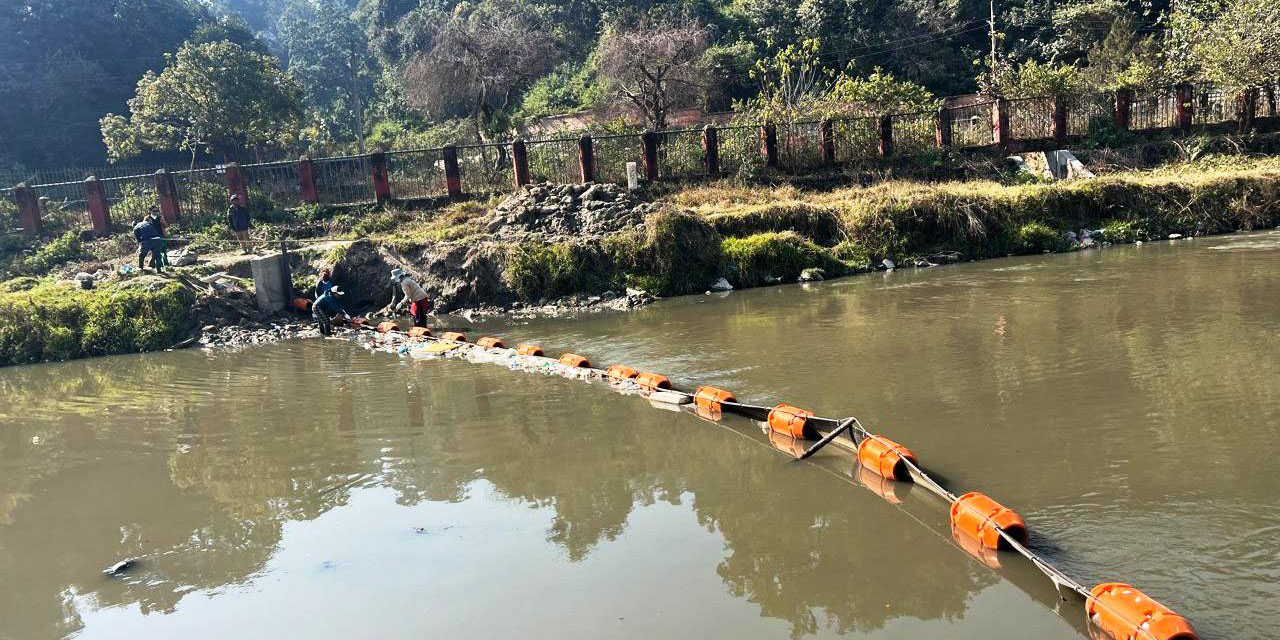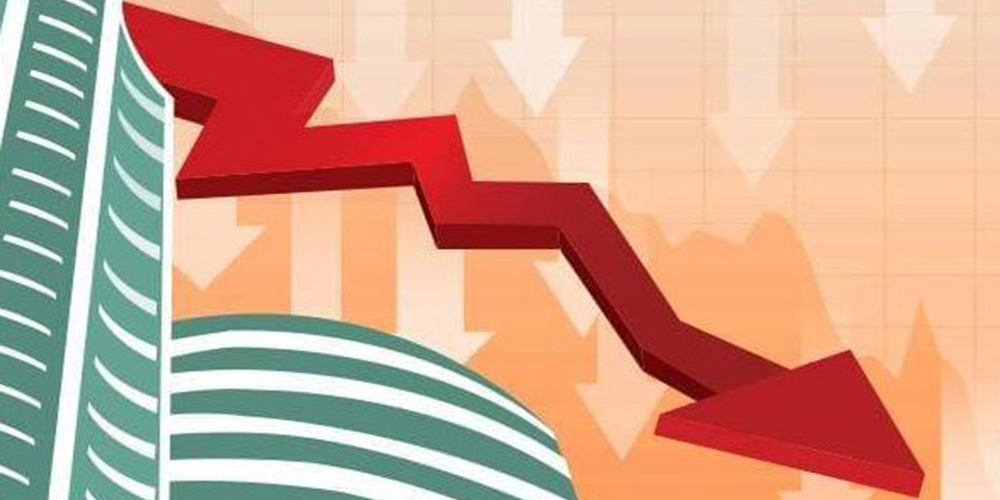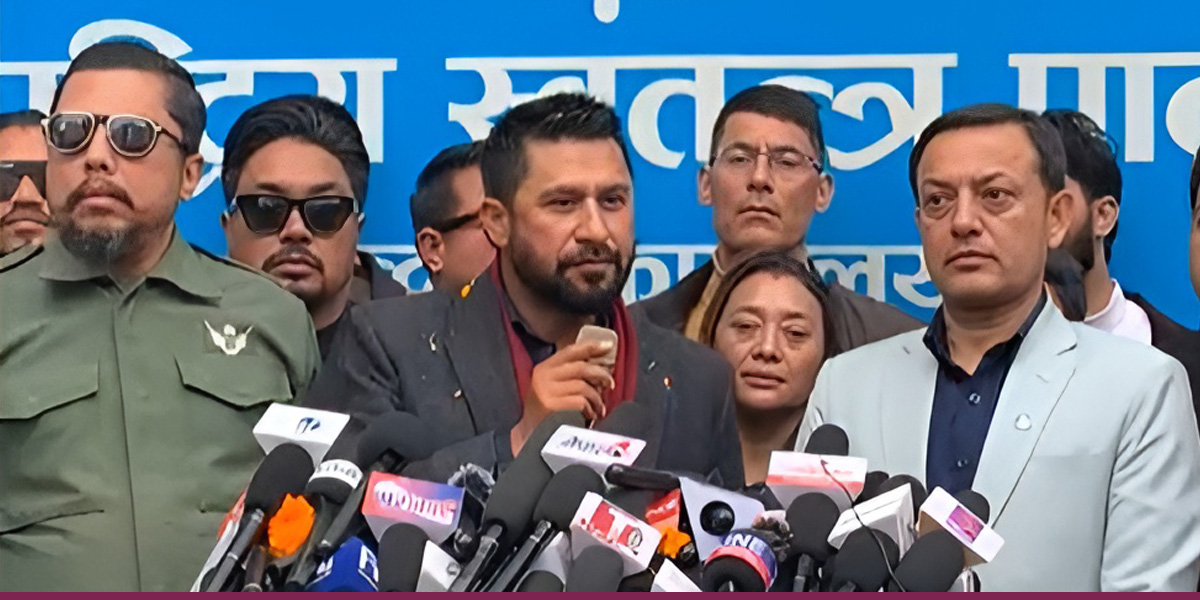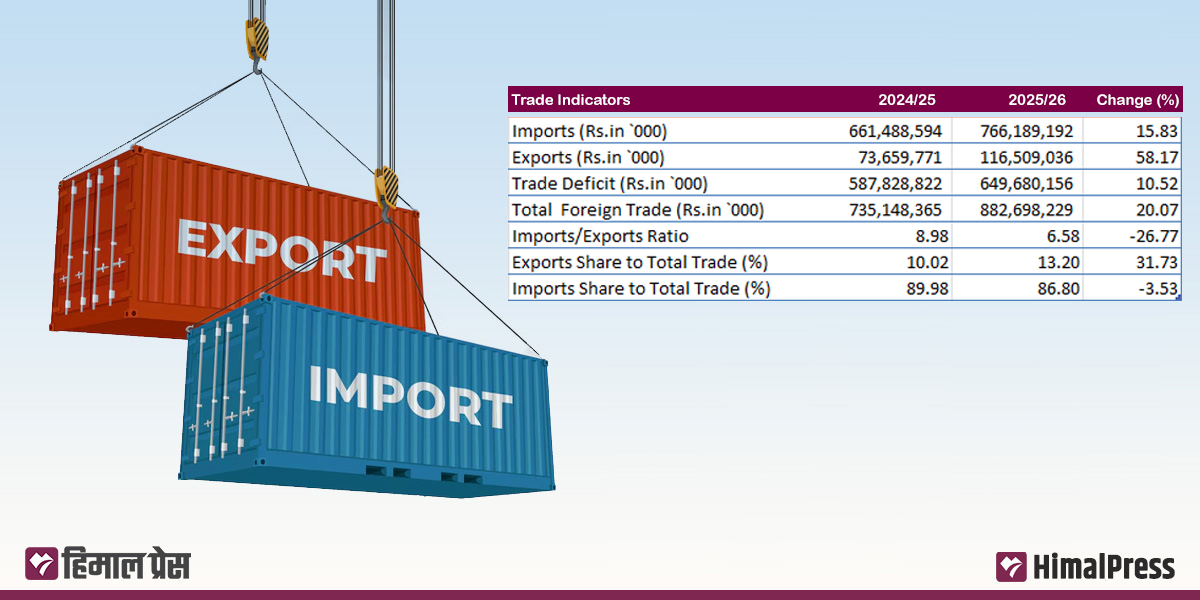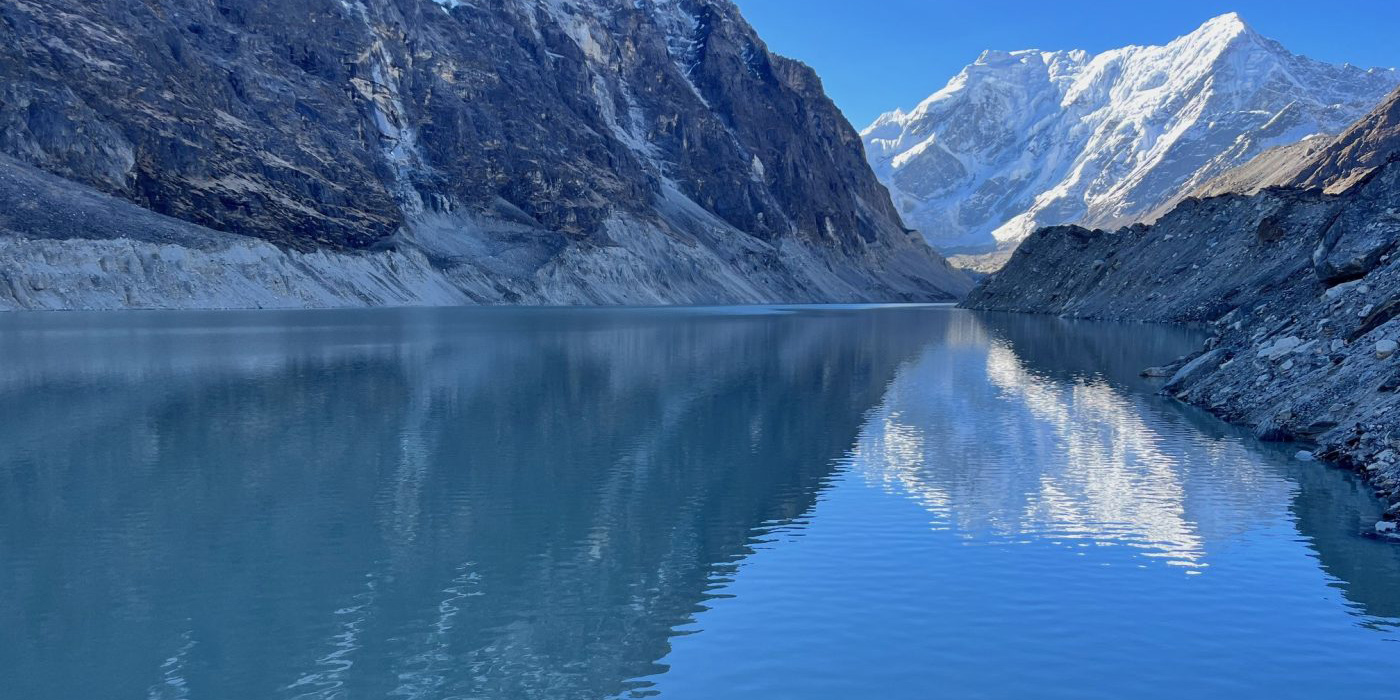 Tso Rolpa glacial lake. Photo: Surendra Phuyal
Tso Rolpa glacial lake. Photo: Surendra Phuyal
Kinjum Sherpa is intimately connected to the high Himalayan landscape in north-east Nepal that she calls home. While she looks after a herd of yaks, her adult children work as climbing guides on peaks including Mount Everest. Despite this, Kinjum does not seem to know of the looming disaster facing Naa, the village she lives in.
Just four kilometers – or a two-hour walk – upstream of Naa is the rapidly expanding Tsho Rolpa glacial lake. Situated 4,545 meters above sea level, it is one of 21 such lakes in Nepal classified as critically dangerous: a glacial lake outburst flood (GLOF) here would have a catastrophic impact on downstream human settlements like Naa and Beding, where people move to during harsh winter months, and on vital infrastructure.
When asked about the risk, the 72-year-old Sherpa says: “I don’t know what should be done to prevent that. Maybe people in the higher-up know that.”
In fact, Tsho Rolpa and the Everest region’s Imja are the only two glacial lakes in Nepal that have a risk mitigation plan. Funded by the World Bank, the Nepali government and international partners, the two-year project was completed in June 2000. It included a five-meter-deep, 70-meter-long canal, which helped lower the lake’s water level by three meters. Additional canals were supposed to bring it down by another 15-17 meters, but a lack of coordination between the funders and the government stalled this work.
According to officials involved, who wished to remain anonymous, the huge sums of money required caused the various parties to lose interest in the partnership once the immediate threat was resolved.
Nearly 25 years later, the risk has increased. A survey conducted by the government’s Department of Hydrology and Meteorology shows that the lake has expanded. The bathymetric (depth measurement) topographic survey report, obtained exclusively by Dialogue Earth, shows that the lake’s area grew from 1.55 square kilometers in 2008 to 1.65 square kilometers in 2022. Its maximum depth, however, slightly decreased, from 136.5 meters to 125.6 meters.
Nepal’s glaciers are feeling the heat
Temperature rise in the Himalayan region has exceeded the global average. In 2019, a field expedition by the International Centre for Integrated Mountain Development (ICIMOD) noted that “the lake is directly fed by Tarkading Glacier, which continued to retreat at a rate of 60 meters annually from 2009 to 2019”.
Furthermore, 2023 was one of the warmest years in Nepal since 1981. The Department of Hydrology and Meteorology recorded “above normal” maximum temperatures in June and July. June brought “the highest deviation among all months”, climbing by more than 2C above normal maximum temperatures.
“The concern regarding possible flooding from Tsho Rolpa and impacts downstream remains high, particularly with rapid warming,” says Arun Bhakta Shrestha, ICIMOD’s senior climate change specialist. “The lake [water level] lowering in 1999-2000 by three meters has not completely averted the risk. The recommendation was to lower it by 20 meters to make the lake completely risk-free.”
Tsho Rolpa is not the only such lake seeing rapid expansion. Pemba Sherpa is one of Kinjum’s 11 children, and a mountaineer who has scaled Everest 21 times. He tells Dialogue Earth that during a recent expedition to Ramdong Go peak, south-west of Tsho Rolpa and 5,900 meters above sea level, he passed by another glacial lake. “Tsho Nakpu is also expanding, causing huge risks to our villages downstream,” he says.
There have been 24 GLOFs recorded over 450 years in Nepal, although details are low in some cases. Of those for which there are sufficient information, 16 occurred in the past 60 years. Half of these originated within Nepal, the others from the Tibetan Plateau.
To mitigate the risks, Shrestha says regular inspections are a must: “Digital cameras could be installed, linked with the telemetry system to get real-time visual information of the lake and surrounding [areas].”
The downstream communities should also be “periodically made aware of the possible risk”, he adds.
What is the government doing?
Dialogue Earth consulted Dinkar Kayastha, the senior divisional hydrologist at the Department of Hydrology and Meteorology. He says the government has identified four that pose the highest GLOF risk: Thulagi in the Gandaki Basin, and Lower Barun, Lumding and Hongu in the Koshi Basin.
“Now we are working to get funding from the Green Climate Fund, so that we can lower the water levels of these lakes, too,” Kayastha says. The government has sent a proposal worth USD 36.1 million to the fund and “negotiations are ongoing.”
The authorities are also exploring whether this funding could be used to upgrade weather-monitoring stations. This work would likely include installing automated equipment, as well as repairing or installing early warning systems at Tsho Rolpa. “Our budget estimates are ready, but we are still unsure who will be willing to fund it,” says Kayastha.
What do local communities want?
Nima Geli Sherpa is the chairperson of Gaurishankar, the rural municipality in which Tsho Rolpa is located. He says the risk of an outburst flood naturally spikes if there’s a big earthquake, “or if the natural dam of the lake starts melting because of global heating”.
He adds: “The early warning systems [installed more than 20 years ago] were damaged long ago, and we don’t even have a good mobile phone network in the area.” The area’s rugged terrain and difficult weather complicate these efforts to make living near Tsho Rolpa safer.
During trips to Tsho Rolpa in 2021 and 2023, two small sheds on Tsho Rolpa’s shores were spotted by Dialogue Earth, but no government staff were present.
Kayastha says the government is limited in actions it can take: “All we can do is install more advanced weather-monitoring stations and early warning systems at Tsho Rolpa and the other dangerous glacial lakes. But if we are to guard the lakes 365 days [a year], we need more staff and more budget.”
Six thousand households across the villages of Naa, Beding, Gongor Khola, Dongyang and Singati remain at risk. This is alongside their associated lands, forests and infrastructure, including roads and a major hydroelectric plant.
Devika Thami is the deputy chair of Bigu, a rural municipality about 30 kilometers downstream of Tsho Rolpa. Thami recently trekked to the lake, learning more of its dangers. “Because of the potential risk, we have decided to mobilize local youth. But that won’t be enough,” she says. “The entire government should act and make us all prepared before it’s too late.”
Others, meanwhile, place their faith in religion. Nima Jangmu Sherpa runs a lodge in Dongyang, which sits on the bank of the Rolwaling River, which originates at Tsho Rolpa. “As per our Buddhist traditions in this area, no animals are killed in this area. So, God will protect this area,” she says. “The lake won’t burst.”
Phuyal is a Kathmandu-based multimedia journalist with 25 years of experience, covering topics including the environment, geopolitics and society. His work has appeared in numerous publications, such as The Kathmandu Post and the BBC World Service.
(This article is republished from Dialogue Earth under a Creative Commons license. Read the original article.)



